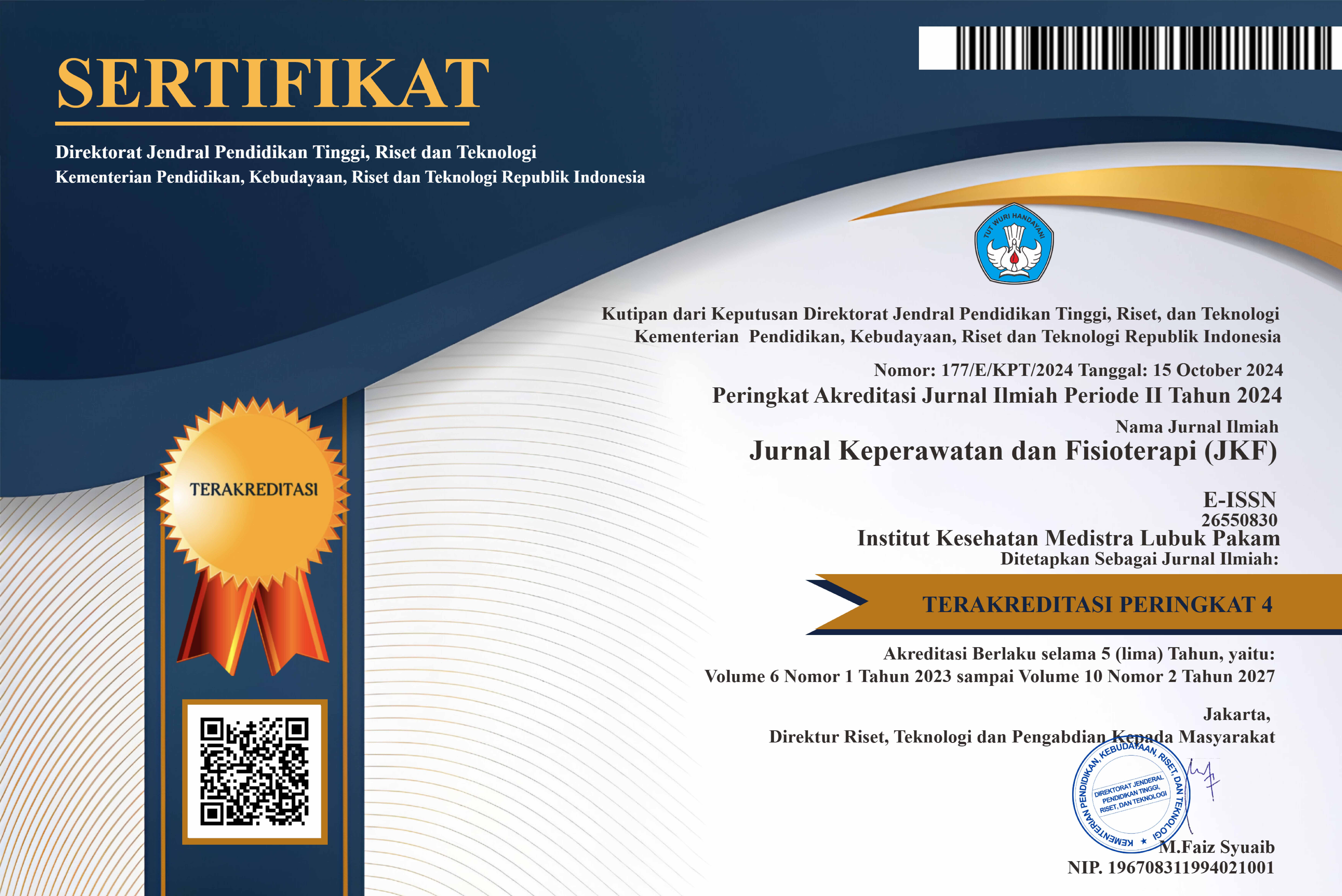The Relationship Between Therapeutic Communication With The Patient's Level of Anxiety Performed Thoracentesis invasive Actions in the Room Lung Actions RSU Karsa Husada Batu
DOI:
https://doi.org/10.35451/jkf.v4i2.959Keywords:
therapeutic communication, anxiety, invasive actionAbstract
Anxiety is often experienced by patients who undergo an invasive procedure in health services. One such invasive procedure is thoracentesis. Efforts by officers to reduce patient anxiety by conducting therapeutic communication. The purpose of the study was to determine the relationship between therapeutic communication and the patient's level of anxiety on invasive thoracentesis in the pulmonary surgery room at Karsa Husada Batu General Hospital. The research design uses Correlative Study. The data collection method used observational research with a cross sectional approach. Respondents in this study were divided into 2, namely patient respondents as many as 41 people and officer respondents as many as 6 people. The independent variable was assessed using an observation sheet while the dependent variable was measured using the HARS instrument. The results showed that the value of good communication (53.7%) had an effect on the value of the level of mild anxiety (53.7%), sufficient communication (41.5%) had an effect on the value of the moderate level of anxiety (39%) and poor communication (4.9). %) affects the level of severe anxiety (7.3%). This shows the relationship between therapeutic communication with the patient's level of anxiety. Pearson's statistical test showed a significance value of 0.000 or (p <0.05), meaning that there was a relationship between therapeutic communication and anxiety levels of patients undergoing invasive thoracentesis. The value of r = +0.6, this indicates that the better the therapeutic communication, the lower the anxiety. It is recommended for officers to apply therapeutic communication so that the anxiety of patients facing thoracentesis can be controlled.
Downloads
Downloads
Published
Issue
Section
License
Copyright in each article is the property of the Author.


























